Exploring Morocco’s hidden gems: Attitude’s Travel Editor and his boyfriend travel to Tangier and beyond
Gay-owned travel company Inclusive Morocco is blazing a trail in the North African country - where 'lewd acts' remain illegal but a bohemian queer scene burgeons.
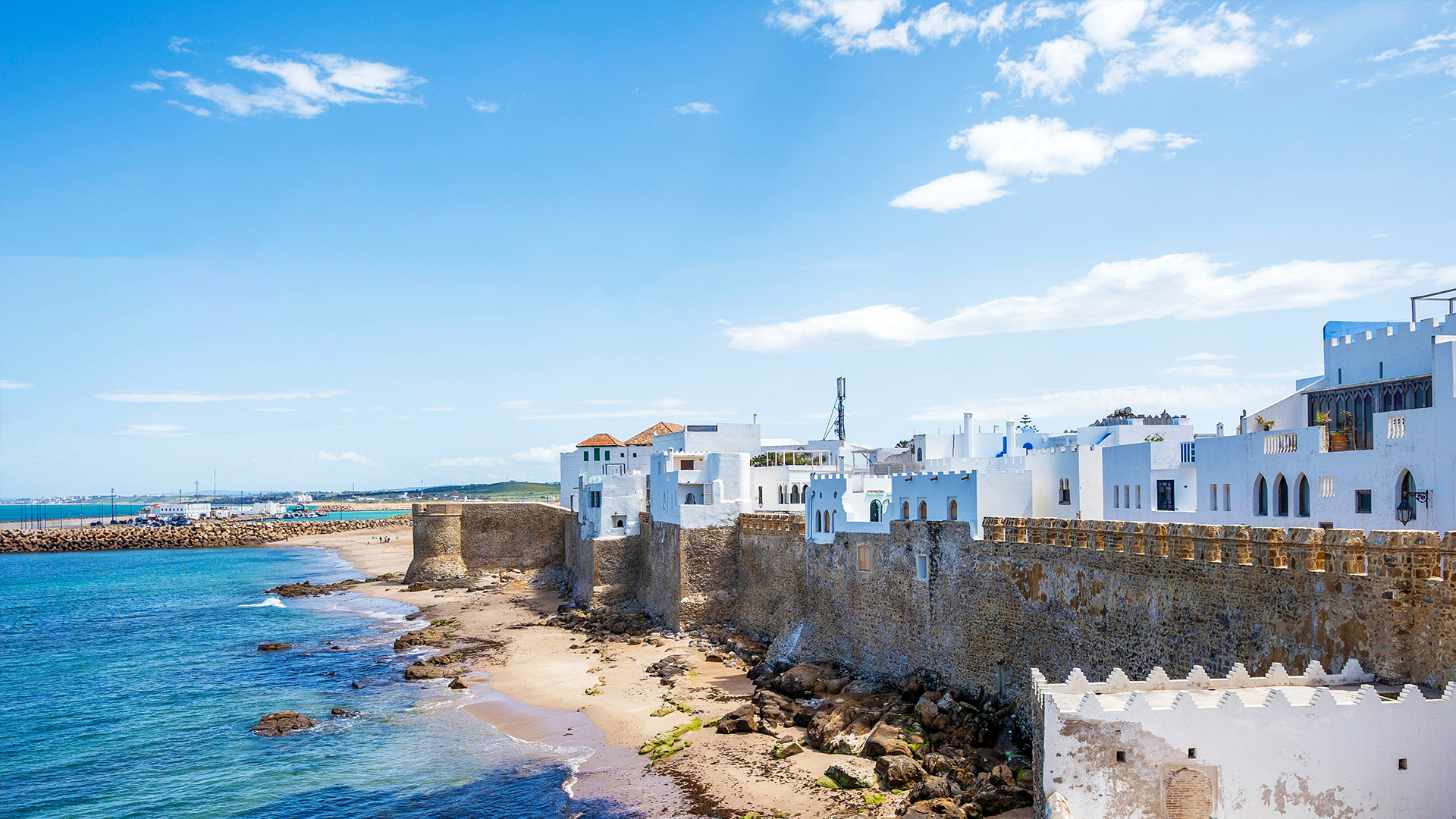
“Before coming to Tangier, one should say goodbye to all friends — one might never see them again. People had come here for a brief holiday, to settle down and let the years go by,” wrote Truman Capote of how the city on Morocco’s northern coast captivated its foreign visitors.
Capote summered in Tangier in 1949. Still in his twink era at 25 years old, he had just published his first novel.
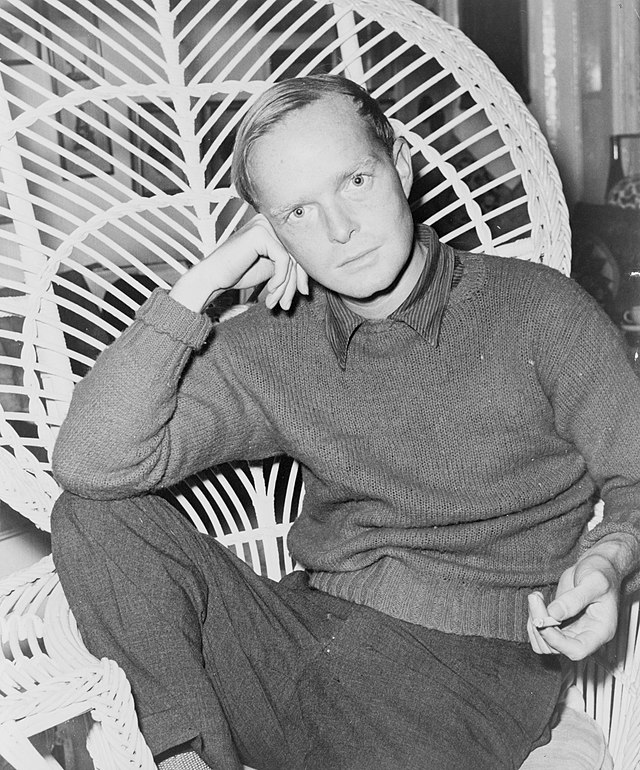
He was just one of a number of queer literary giants to spend time in the city. It also played host to Tennessee Williams, Allen Ginsberg, and William S. Burroughs, who wrote Naked Lunch while high on heroin in the Moroccan city in the early 1950s.
Tangier, which looks across to Spain over the Strait of Gibraltar, has an intriguing history. While the rest of Morocco became a French protectorate in 1912, it had special status.
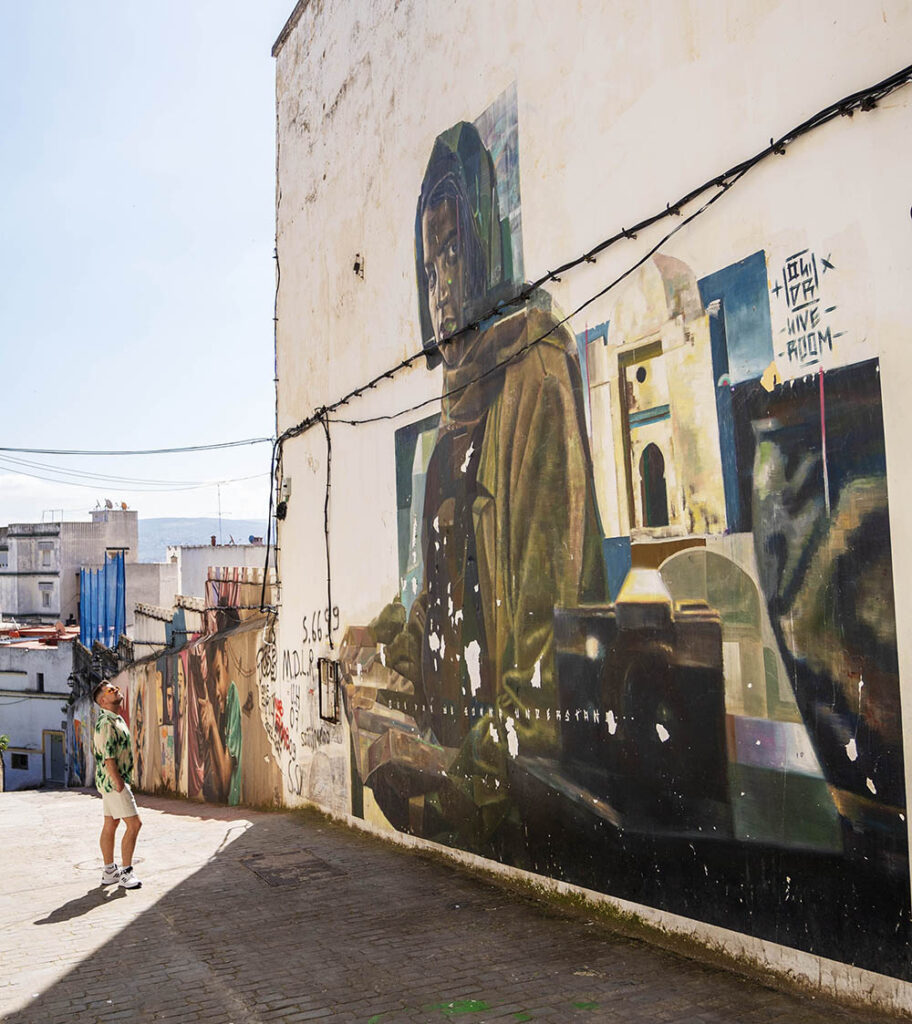
Between 1923 and 1956, it was an international zone, a tax haven with a bohemian vibe. This led to it becoming a retreat for gay men from Western countries fleeing the oppressive anti-LGBTQ+ laws of the time.
Tangier’s days as a gay sanctuary were short-lived, however. When it became part of Morocco after the country won independence from France in 1956, the newly instated Moroccan king imposed new laws, including 1962’s article 489, whereby “lewd or unnatural acts with an individual of the same sex” were deemed punishable by imprisonment. It is still in place today.
Inclusive Morocco
It is against this backdrop that my boyfriend and I arrive in Tangier. We are here to meet Bilal El Hammoumy, one of the founders of Inclusive Morocco, a Moroccan-owned travel company that creates bespoke trips to every corner of the country, including ours to the less-explored northern region.
El Hammoumy is charming, and soon we are all laughing like old friends. In June 2022, he came out as gay to the international press and on his company’s website. “It was a moment of anxiety for us, especially [because] at the time we were a very small team, and we were worried about what would happen. There were some negative remarks, but the general consensus was quite encouraging,” he says of the reaction his coming out received.
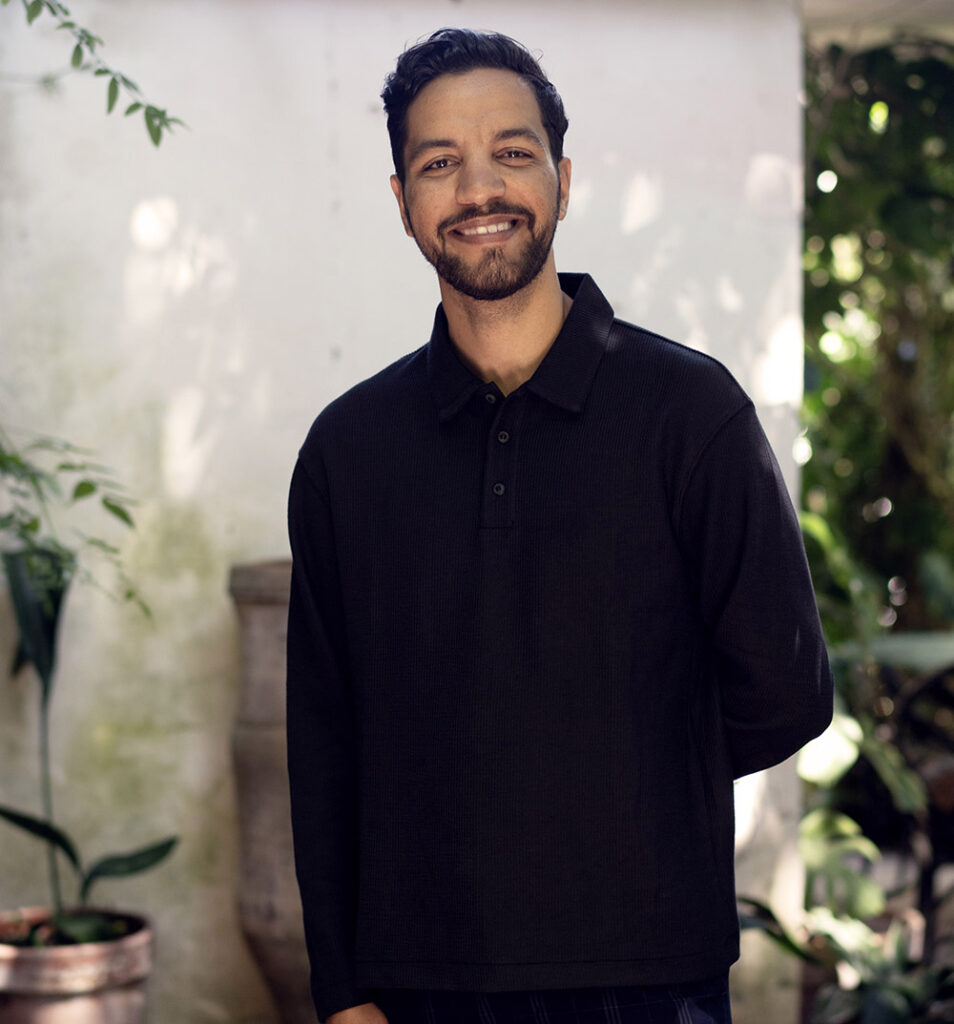
We broach the subject of LGBTQ+ travellers visiting Morocco. “You may not want to go somewhere and support an economy that is anti-LGBTQ+, but at the same time, you risk abandoning local projects and not aiding in progression,” he says. “It is one of the reasons we came out [as an LGBTQ+-owned company]. To be honest, most of our clients are straight, but it was important for us to show our visibility to the local community.”
El Hammoumy goes on to explain that the anti-LGBTQ+ law in Morocco is quite confusing. While it is not illegal to be gay, carrying out “lewd acts” with someone of the same sex is against the law. (Which is a shame, we reply, as lewd acts are one of the best parts about being gay.)
In reality, many same-sex couples — both Moroccans and Western expats — live together in Morocco, and they are safe if they are discreet in public, El Hammoumy tells us.
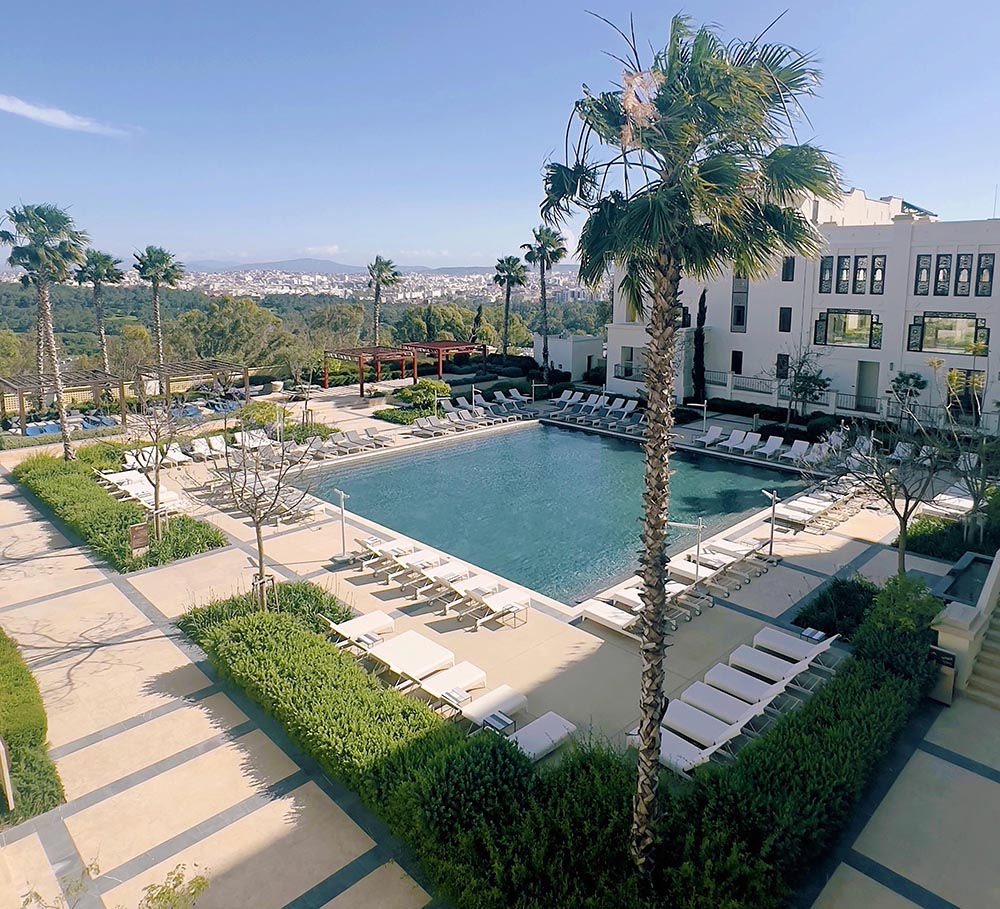
Having said that, gay Moroccans have been arrested in recent years, which is a consideration for LGBTQ+ travellers thinking of booking a holiday here.
Personally, we believe that it is important to support the local LGBTQ+ community rather than boycott Morocco, and that it seems to be safe for gay tourists as long as you don’t engage in public displays of affection.
Tangier Food Tour
First on our itinerary is a private food tour, guided by El Hammoumy. We start with some samples of street market goodies before sitting down at Restaurant Saveur de Poisson.
The packed fish restaurant has no menu; instead, El Hammoumy explains, the chef cooks according to his mood — and judging by the dishes arriving from the charcoal grill, he must be feeling ecstatic.
As we leave, a queue is forming for seats in the restaurant. For dessert, we head to a cafe selling ZaaZaa, an avocado-based smoothie topped with pineapple, Oreos and KitKats — it’s delicious and we walk out on a sugar high.
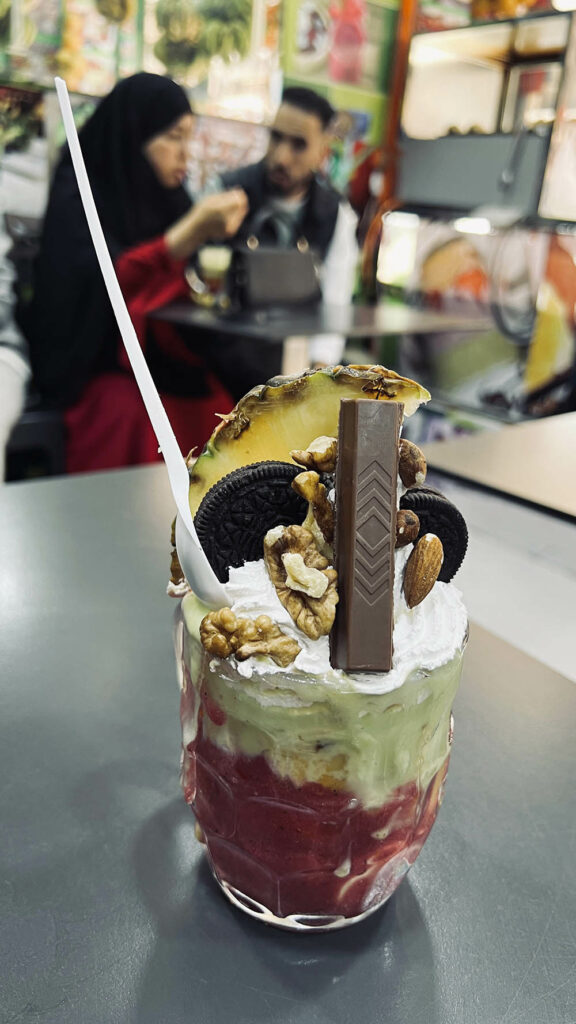
Our next stop is the hole-in-the-wall Cafes Porto Rico, where the barista proudly shows us his cafe on the front page of the Washington Post’s Travel section before making us spiced Morocco coffee with warming cinnamon, cardamon, nutmeg, ginger and pepper.
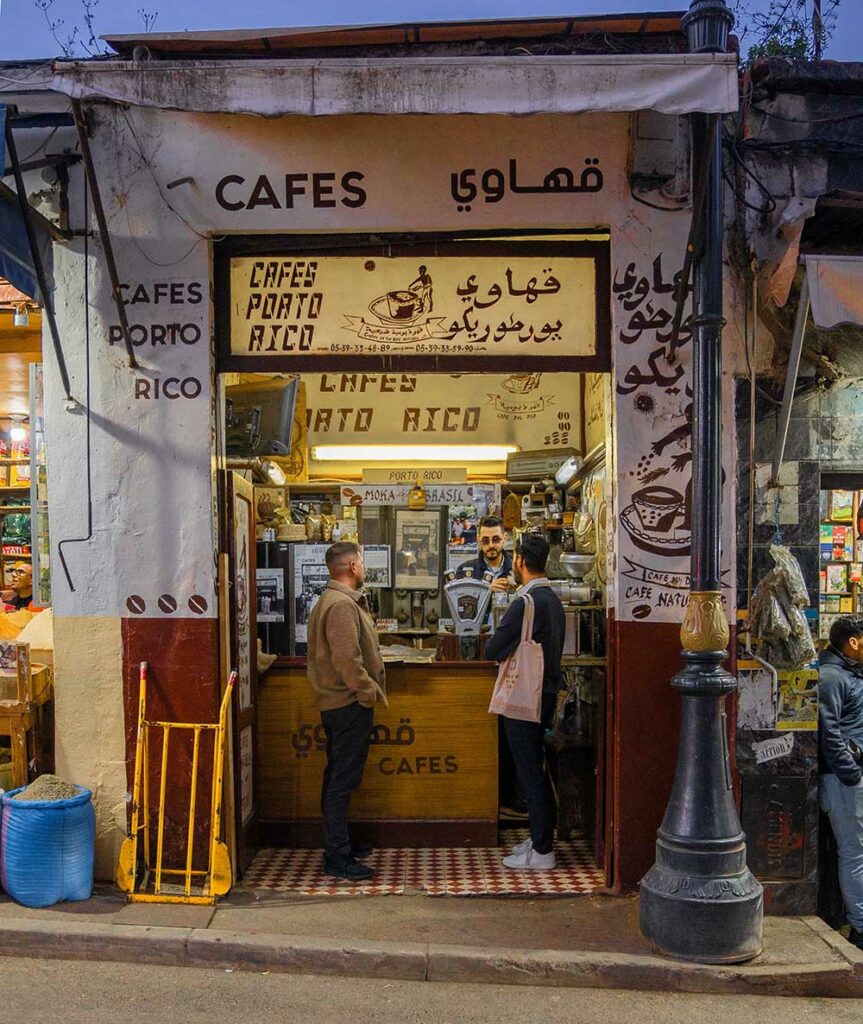
Next, we make a pilgrimage to two hangouts beloved of the aforementioned queer writers: Le Gran Café de Paris and Cinema Rif, the restored Art Deco theatre on Grand Socco square. While the legacy of Capote et al resides mostly in the anecdotes and stories of their time here, it is still fun to follow in their footsteps.
One factor that kept us from coming to Tangier sooner to explore its history was its run-down reputation. After visiting over a decade ago, my boyfriend remarks that it is now a new city, and every local we meet agrees.
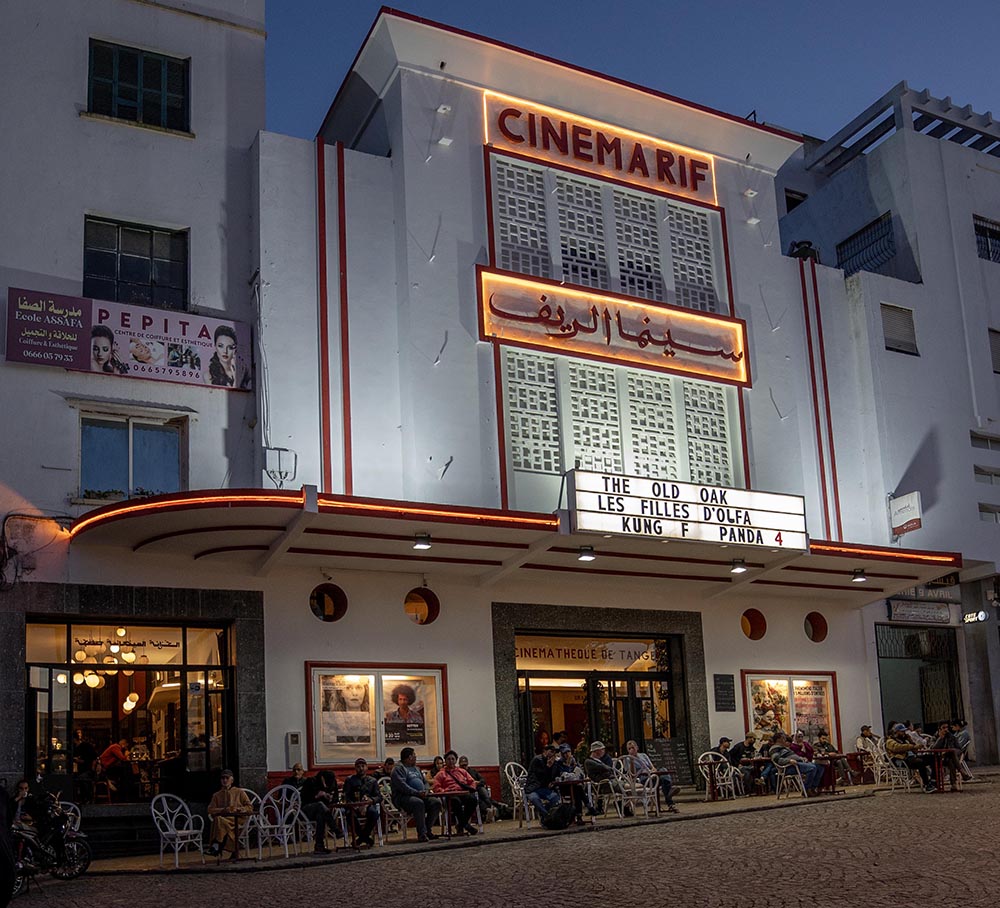
King Mohammed VI, who took the throne in 1999 after his father’s death, vowed to improve the infrastructure and restore Tangier’s beauty. As we explore, we find a metropolis that has better roads and manicured green spaces than many places in the UK.
Two years ago, we visited Marrakesh in the south of Morocco, which is gritty with a clay-coloured palette across the cityscape, whereas Tangier lives up to its moniker of the White City.
Fairmont Tazi Palace
During our three nights here, we stay at Fairmont Tazi Palace, part of California, a hilltop neighbourhood overlooking the city. The 133-room hotel is a former palace of the Sultan’s representatives which opened to great fanfare in late 2022.
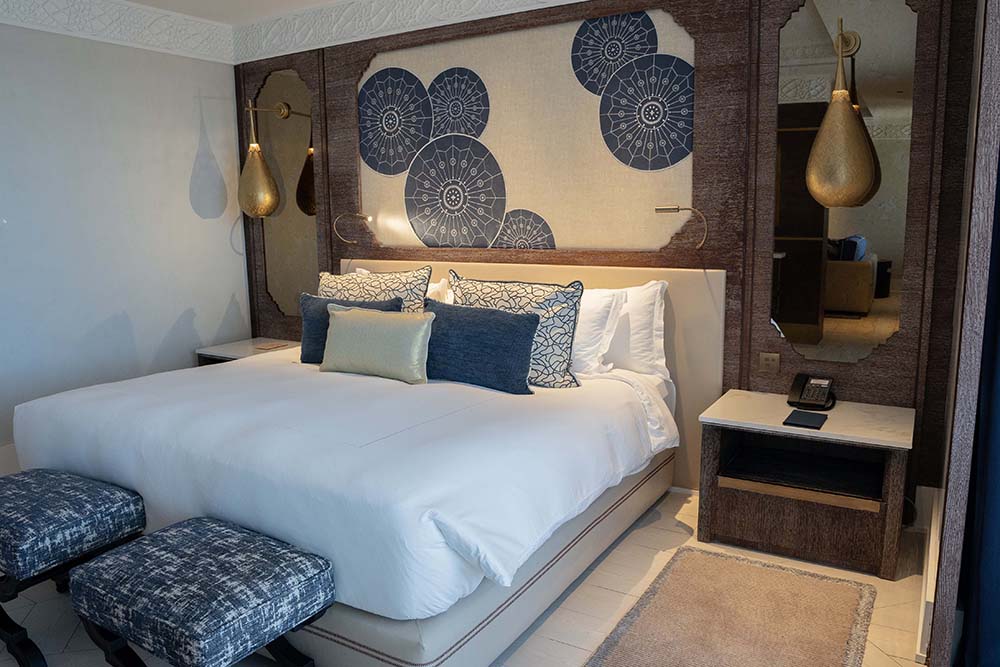
An extensive redesign has crafted a modern pad for visitors, with Arabic style references everywhere you look. Although as we gaze across the hotel’s massive pool and peer over the mansions and at the skyline, we could almost be in Los Angeles.
History Tour of Tangier
Inclusive Morocco is not only focused on exclusively hiring and working with LGBTQ+-friendly locals, but also empowering local women.
As we embark on a history tour, we are guided by Soukaina, who wears a local beige Djellaba robe embroidered with gold and silver thread and is one of only three female guides living and working in northern Morocco.
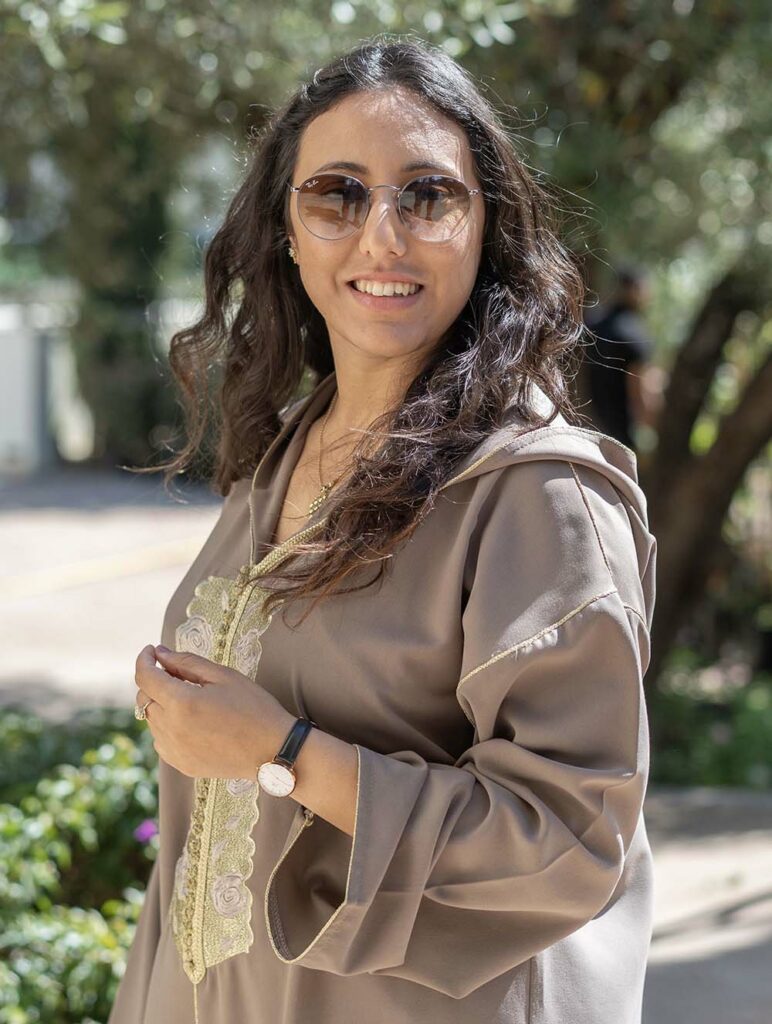
She is a tenacious woman who has mastered five languages and won a scholarship to study in France. She could have pursued a career there after university, but she tells us that the racism she experienced meant she preferred to return home.
Like El Hammoumy, Soukaina is refreshingly honest, and she doesn’t sugar-coat Morocco’s history. We never feel nervous asking her questions about queer life in Morocco, even though she is an ally rather than a member of the LGBTQ+ community.
Soukaina takes us to the coast just west of the city, to the picturesque Cape Spartel Lighthouse and Hercules Cave, a geological wonder with an Africa-shaped opening that looks out onto the Atlantic Ocean. It is named after the Greek hero because, according to legend, he rested here at one point during his 12 labours.
We then head back to the city to visit the medina, the city’s old town. The area is brilliant white with green plants lined up outside people’s homes. Like most of Morocco’s medinas, it features maze-like streets with plenty of dead ends, so having a guide saves time and reveals a few hidden gems.
One of these is the American Legation Museum, a gift to America from the Sultan in 1821 and the only American National Historical Landmark in a foreign country.
The former diplomatic mission now houses the story of the countries’ long relationship — Morocco was the first world power to recognise the United States as a country back in 1777 — as well as plenty of history from the two World Wars.
Exploring the alleyways, we pass Café Baba, where the Rolling Stones hung out in the 1960s. The staff at the time had no idea who the Western hippies were and only learnt years later when someone identified Keith Richards from a photo on their wall.
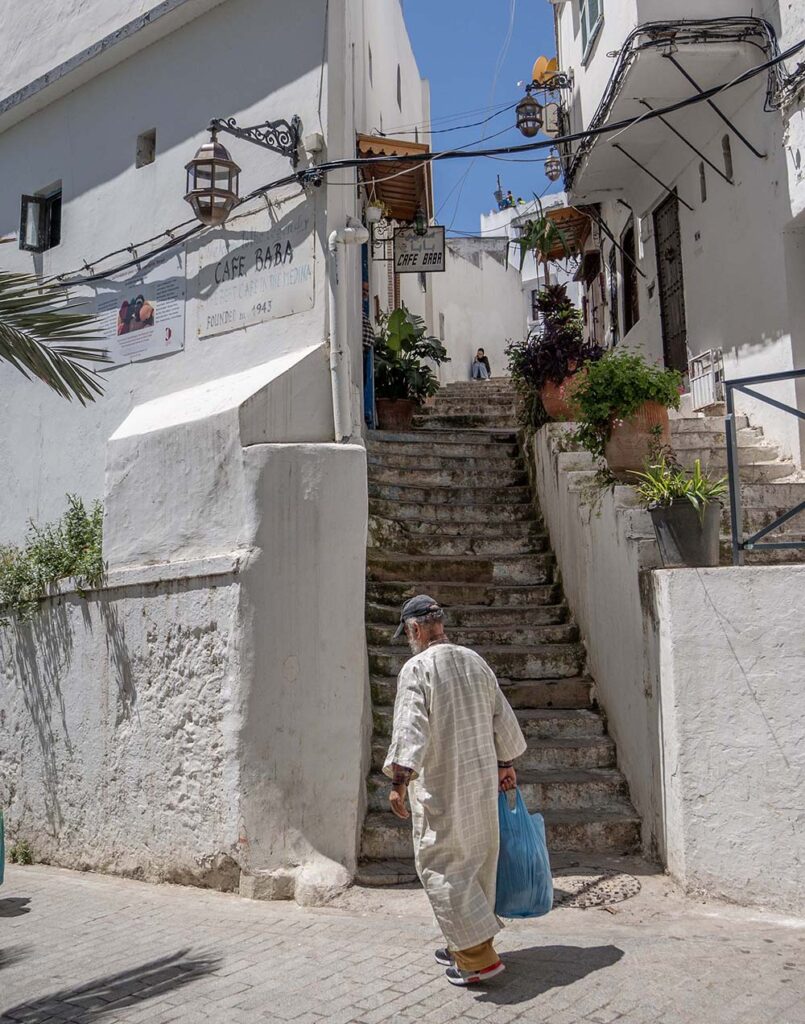
For lunch, Soukaina drops us off at Dada, a stunning restaurant which only opened six months ago. White tablecloths, large Moroccan lanterns and black-and-white chevron floor tiles create an elegant space, but the food is the real star.
In the open kitchen, we can see two women preparing our meal: a fragrant starter of herby salad with cheese, a prawn tagine that alone is worth the trip, and a caramel flan that makes the perfect finish.
Afterwards, we continue through the sun-kissed streets of the medina to the gates of the kasbah, the fortified section of the old town. Soukaina takes us to the Kasbah Museum, the former Governor’s Palace built in the 18th century, where we take in the beautiful architecture of its courtyard and treasury room.
In the building’s former prison is the Museum of Contemporary Art, which exhibits the work of international artists among its arched brick doorways.
Villa Madrouka
We bid Soukaina goodbye before entering Villa Mabrouka, Jasper Conran’s brand-new, 12-room hotel just outside the kasbah’s walls.
Through the gate of the secluded property is one of the prettiest hotels we have ever visited. It is white inside and out, allowing the select decorations, such as the ancient mosaics hung on the walls and the immaculate gardens and views of the far-off Spanish coastline, to truly pop.
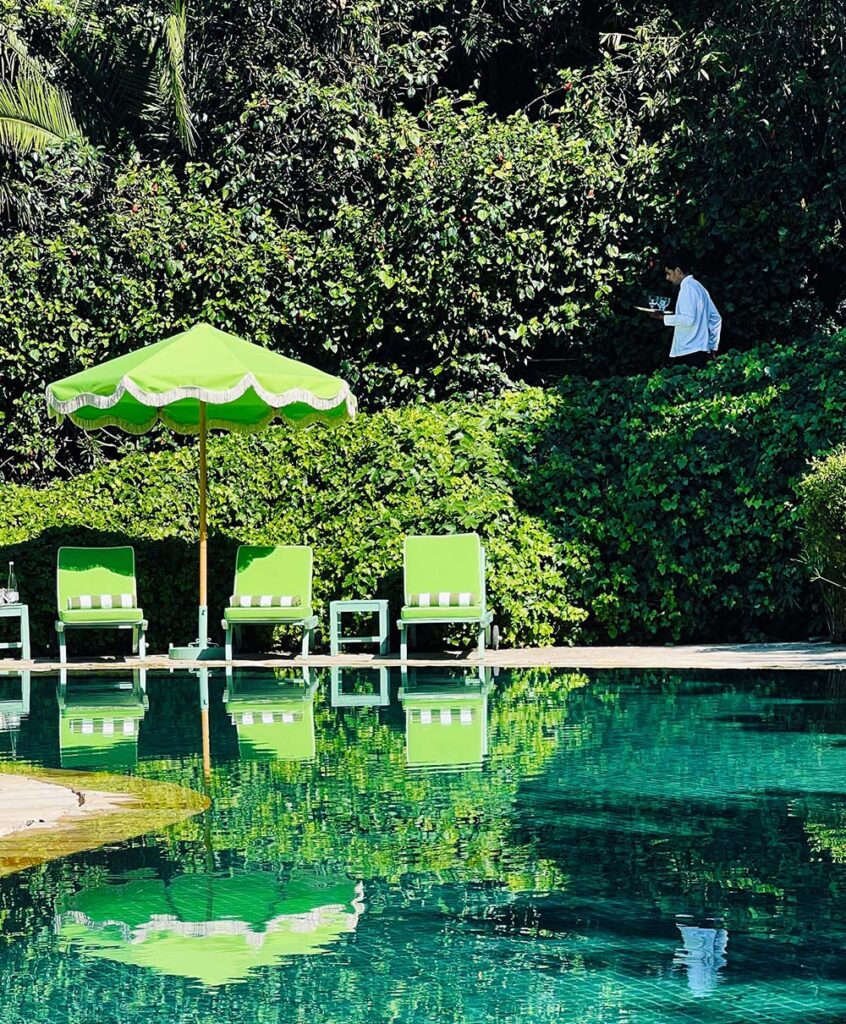
We are not staying the night, but El Hammoumy wants us to get a taste of Villa Mabrouka, so we take full advantage by lounging on the lime green sun beds by the kidney-shaped pool before dining at the hotel’s restaurant.
The menu harks back to classic British and French dishes. Our meal is lovely, but it is the chocolate soufflé that steals the show (well worth the 20-minute wait).
Villa Mabrouka was once the home of fashion designer Yves Saint Laurent and his partner Pierre Bergé.
Art Tour in Tangier
The following day, we meet El Hammoumy at the home of Italian writer Umberto Pasti, who, with his partner French fashion designer Stephan Janson, has created a collection that would be the envy of the British Museum.
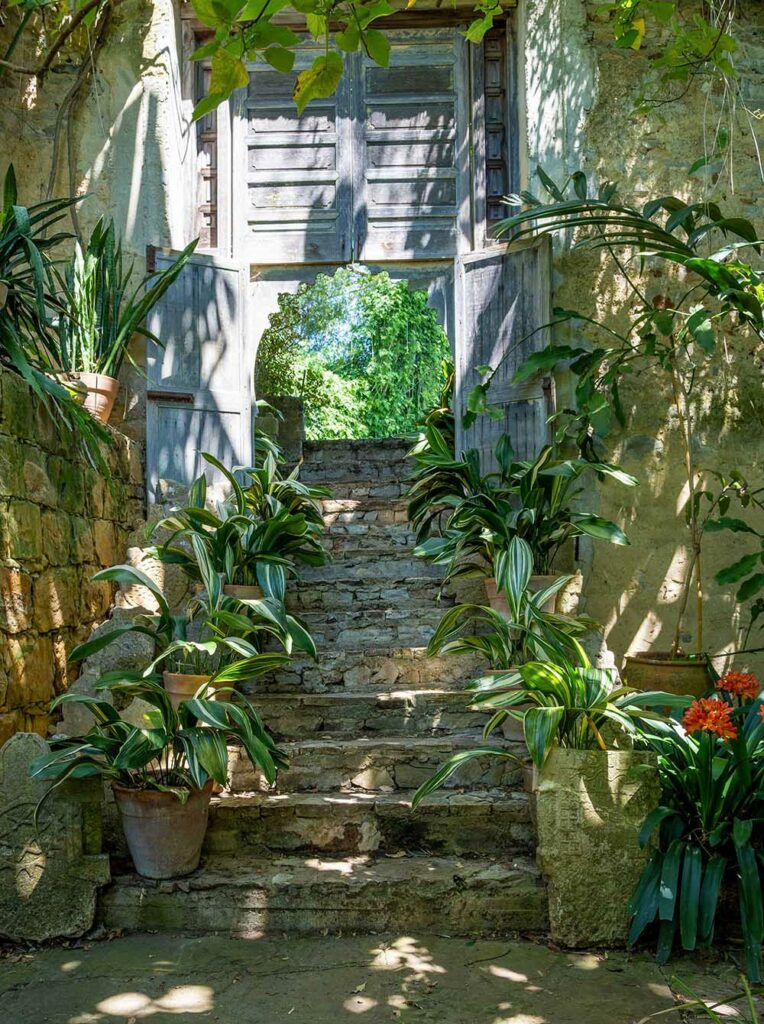
When we visit, the couple are away at Rahuna, their countryside estate in a village an hour from Tangier. Both this home and the couple’s garden in Rahuna are the subjects of large picture books: The House of a Lifetime and Eden Revisited, respectively.
In the couple’s absence, Pasti’s personal assistant shows us around the property. In interviews, Pasti describes himself as not a gardener but a collector of plants, and his garden is more like a jungle.
Encased in the unkempt foliage, we sniff each passing flower as we walk the narrow paths before going inside the house.
My eyes do not know where to focus as there is so much on display, from colourful hand-woven rugs, tiles and Roman columns to statues and figures of every size and shape, as well as stacks of books. But there is order in the madness. Waking up in the morning, I was not expecting to caress the spinal column of a blue whale but, incredibly, a skeleton of the aquatic mammal is also part of the collection.
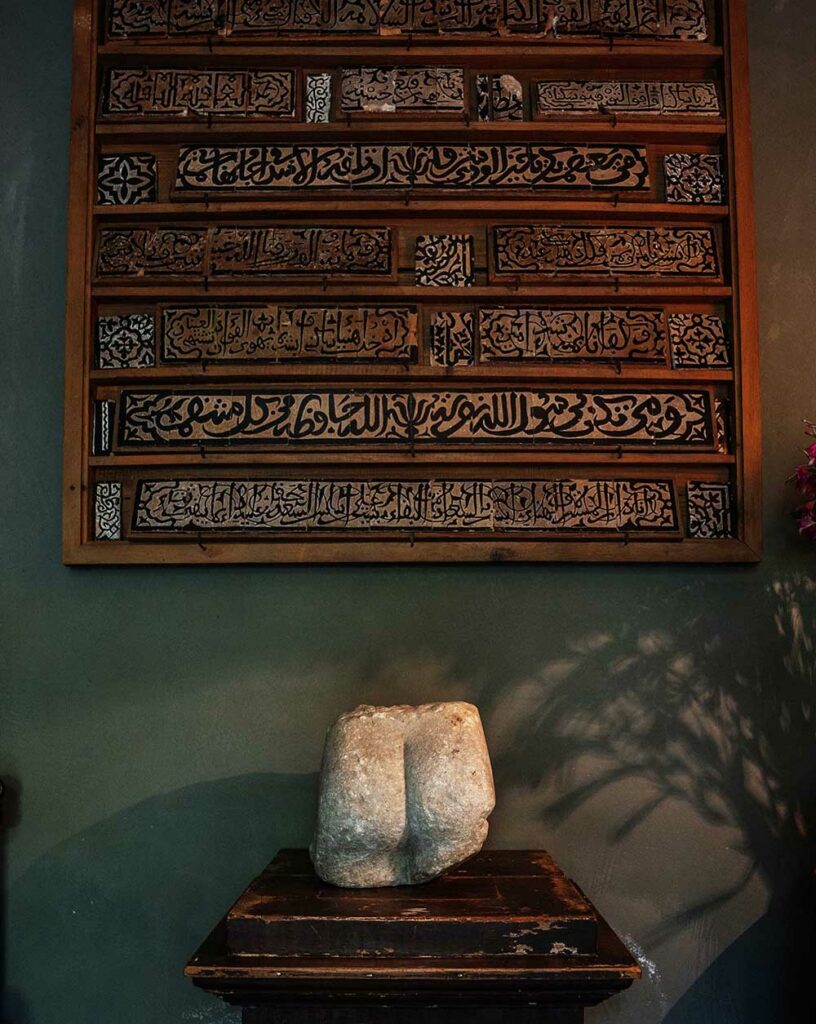
In a video interview with Cabana Magazine, Pasti discussed his reason for living in Tangier: “What keeps me here are the souvenirs, the memories, the unbelievably nice way of northern Moroccan people to be.”
I have to agree with Pasti’s view of the locals as we leave his house of curiosities and start our art tour at a Moroccan artist’s home. We are in the flat of Mohamed Said Chair, whose works have been displayed in London, Europe and America.
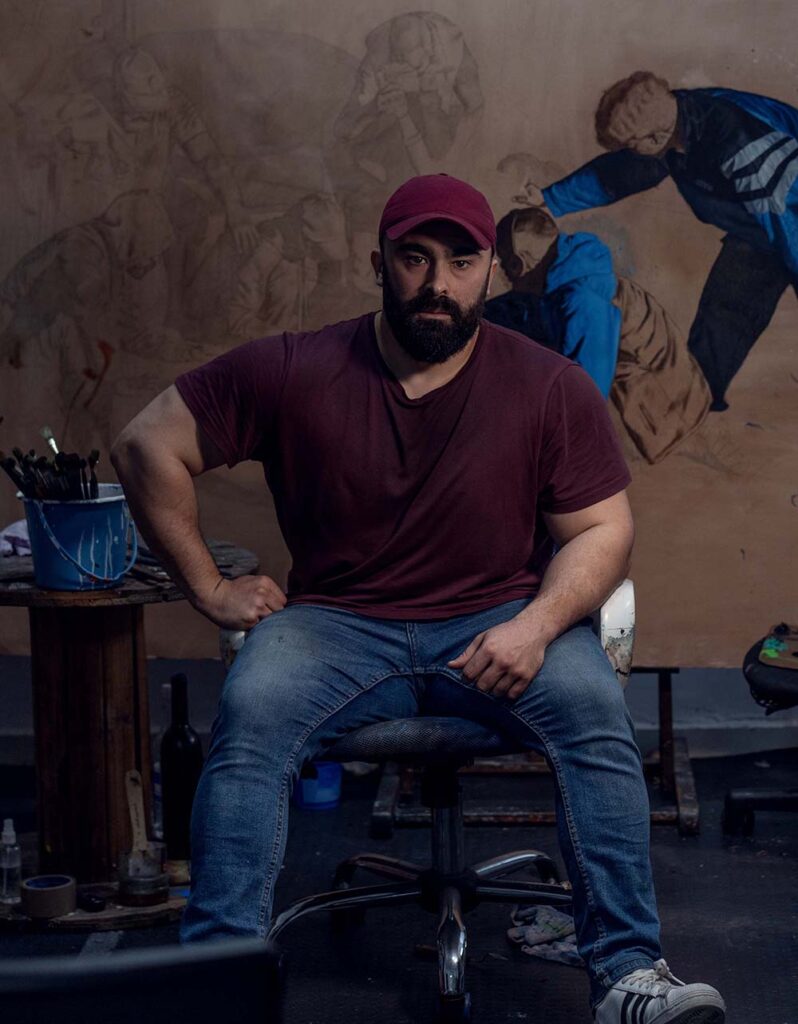
He offers walnut-filled dates and a bowl of sellou, a moreish dessert of butter, honey almonds and sesame. On entering his studio, we discover canvases painted with hyper-realistic groups of people.
We question why everyone’s faces are obscured in the works, and the former banker explains that what Rembrandt did for faces cannot be bettered, so he focuses his attention on telling stories through the subjects’ bodies. It’s fascinating to see the artist’s process.
Next, we visit Galerie Delacroix, which features rotating shows, and Gallery Kent, whose director shows us their new all-women show based on the 2013 vampire film Only Lovers Left Alive, which was filmed in Detroit and Tangier. We browse the bookshop Les Insolites.
At the back, there is a tiny gallery showing humorous paintings of life in the city. Many of them feature Spider-Man.
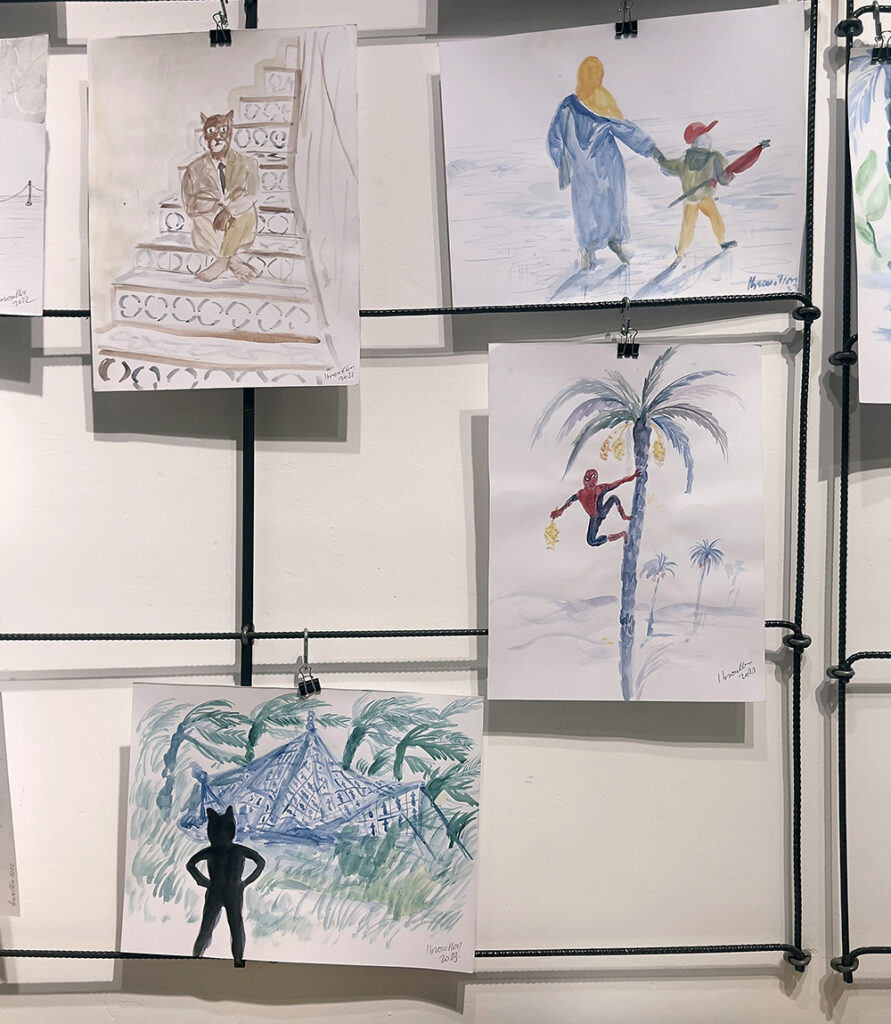
Just down the street in a shop signposted as Kiosk is Think Tangier, a non-profit cultural agency that is shaping Tangier’s development through art, research and collaboration. All proof that art has an important place in this beautiful city.
Chefchaouen, the Blue City
Now that we’ve been enchanted by the White City, our driver, Omar, who has been chauffeuring us around Tangier, drives us to the Blue City, Chefchaouen.
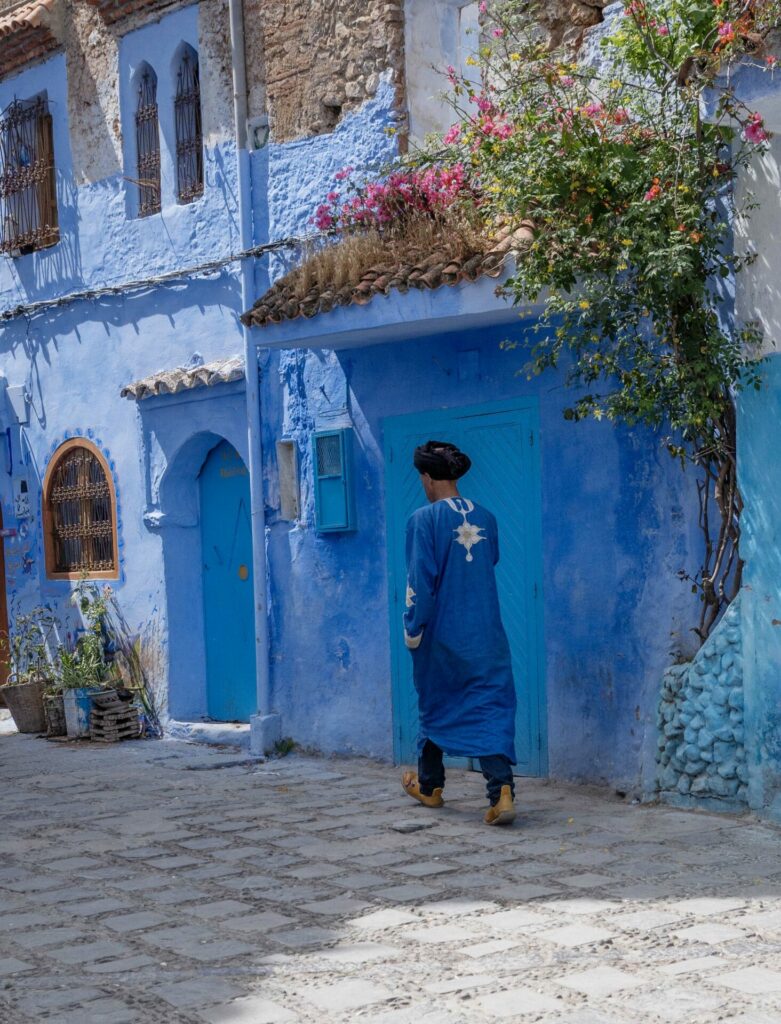
During the two-hour journey, our eyes fixate on the lush countryside full of wildflowers, olive orchards and even the odd vineyard — yes, Morocco is the largest wine producer in the Muslim world.
We could be in southern Europe were it not for the farmers wearing chachiya jebaliya, the locals’ traditional straw hats adorned with colourful pompoms. The roads through the green Rif Mountains are well maintained, and we soon spot Chefchaouen as a cluster of blue buildings on the foothills of Ka’ala mountain.
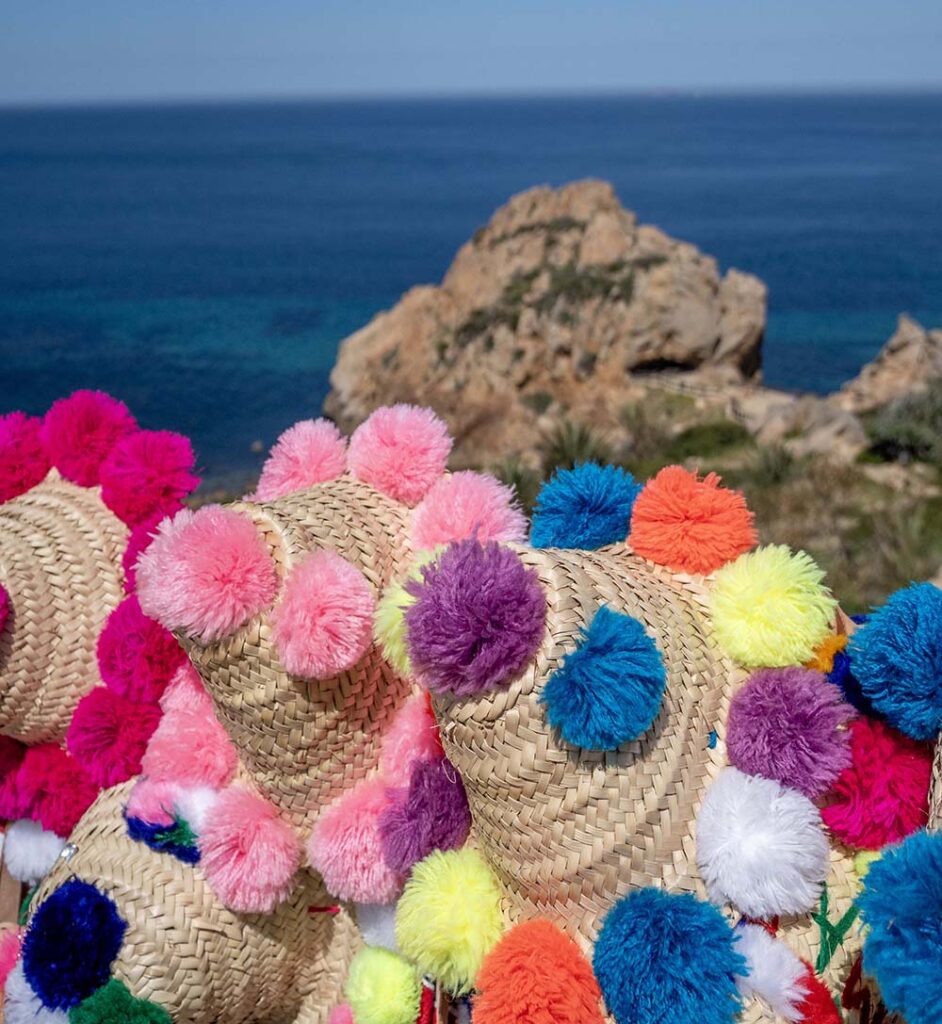
We share the afternoon with another rare female guide, Fatima, who comes from the area and is incredibly knowledgeable and engaging. First things first, we ask the obvious question: why is Chefchaouen blue?
It seems nobody is sure. The city was founded in 1471 to help defend the area from the invading Portuguese. In 1920, Spain captured the city, and in the Second World War many Jews immigrated to Chefchaouen from Europe.
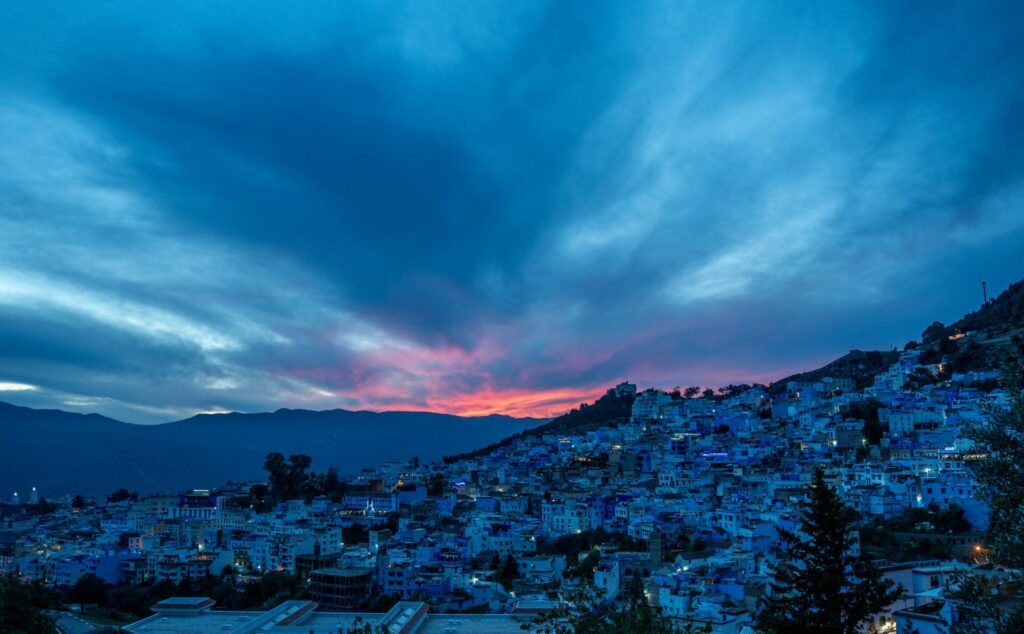
The theory goes that the Jewish community introduced the tradition of painting the buildings blue to represent the sky and to remind them of heaven and God.
Whatever the reason, the brilliantly blue paint has created a unique destination where we find a photo opportunity on every street of the medina. During our one-night stay in April, the medina isn’t too busy, but Fatima warns us that in the summer months the streets fill with tourists, so plan accordingly.
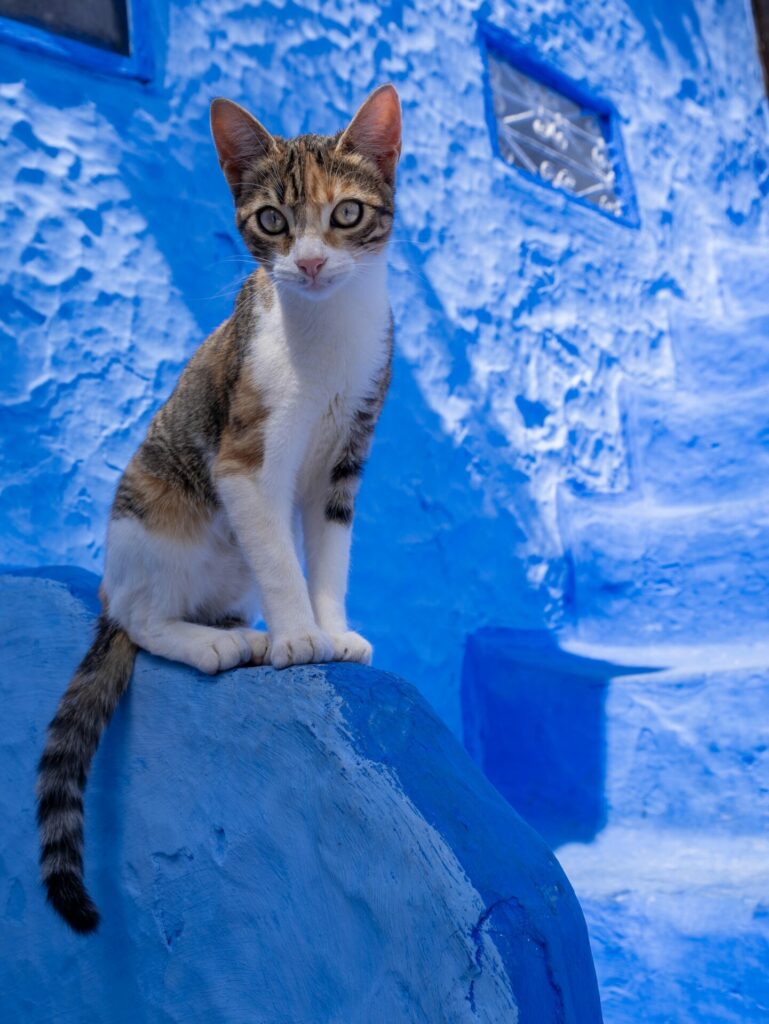
We pass community ovens that have been in place since the 1500s, while the mountain spring water that flows through the eastern edge of the city is used by the orange juice sellers to keep the fruit chilled before freshly pressing them for customers.
That night we are staying at the Dar Jasmine hotel. As there are over a hundred steps to its entrance, we’re happy to let the staff carry our bags up. Our room has a hipster vibe and a stunning view of the city.
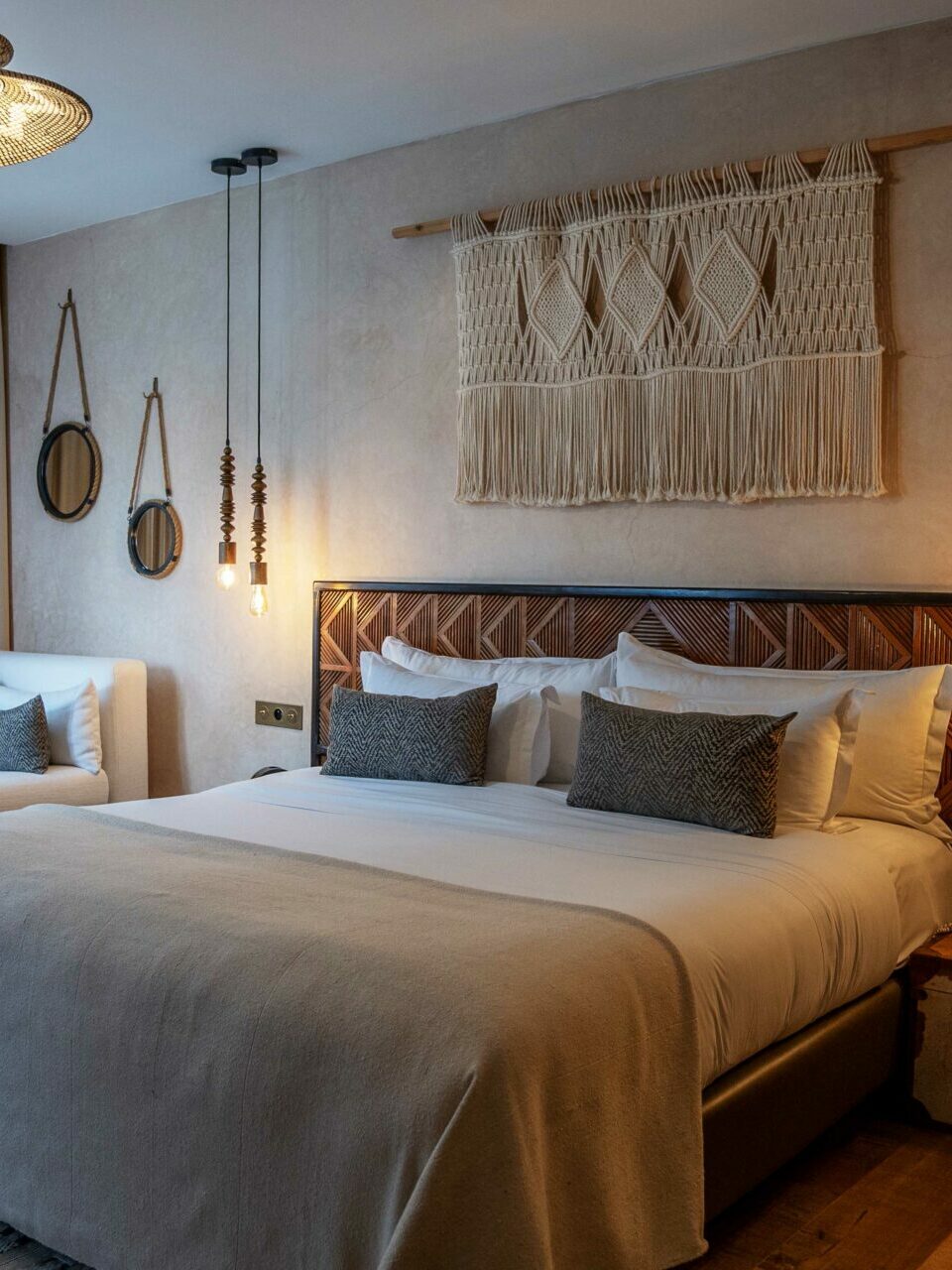
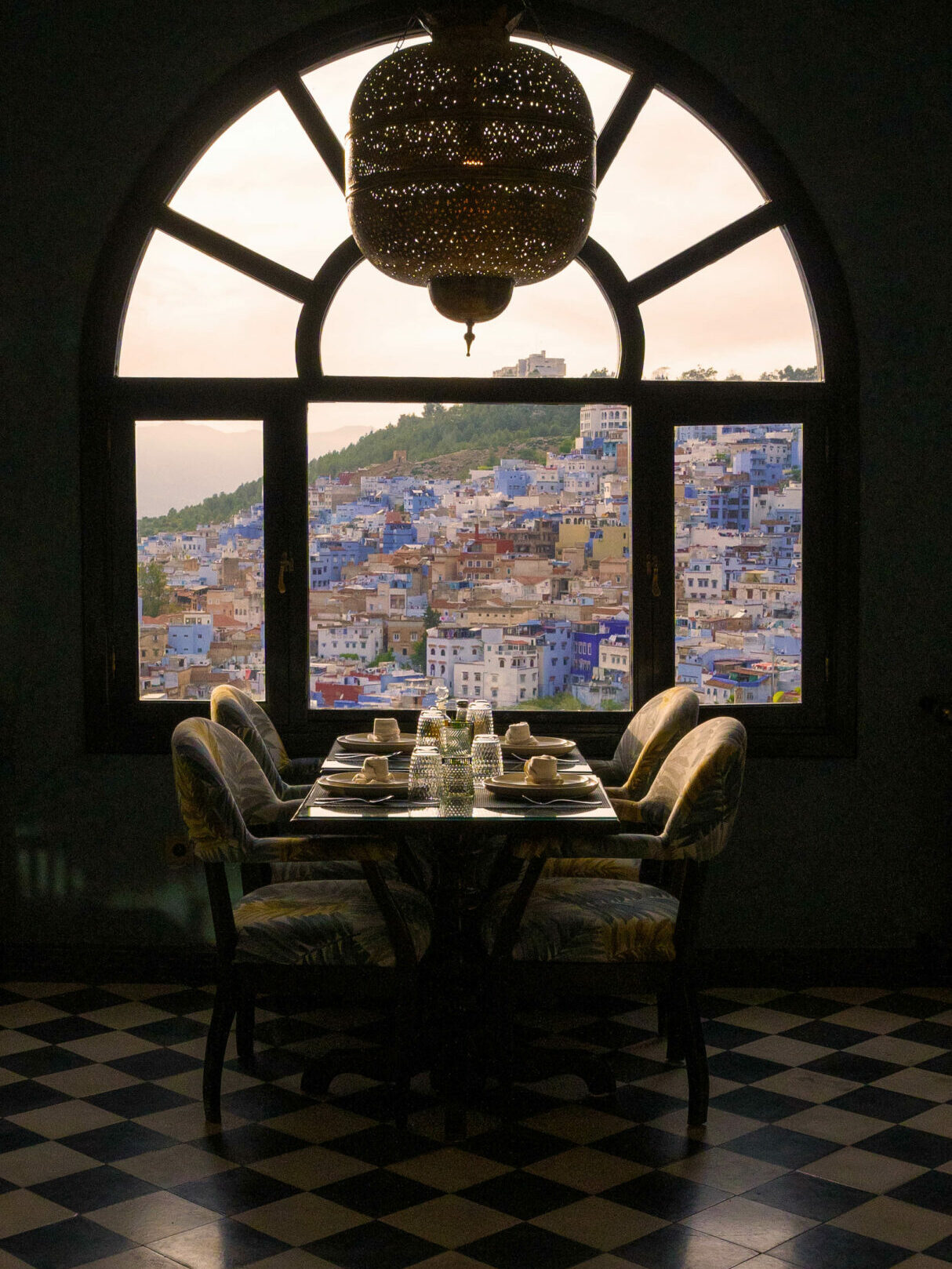
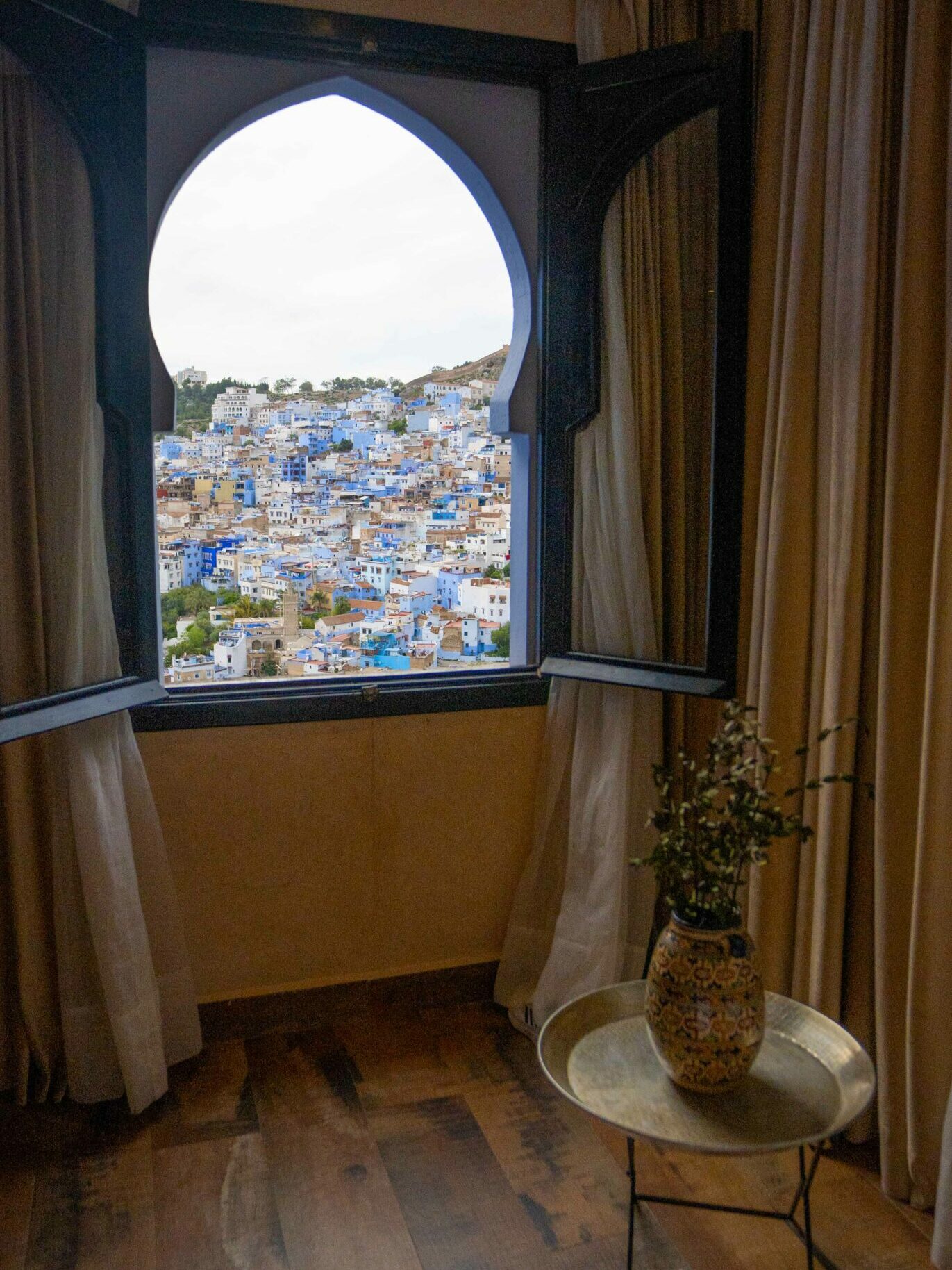
There is a small pool and restaurant on site too, but I must recommend lunch at the neighbouring Dar Echchaouen Maison D’Hotel, where phenomenal tagine dishes are served.
Asilah
Our other one-night stay outside Tangier takes us an hour south of the city, along the western coast.
We make a quick stop in Asilah to explore its small white medina, where the residents paint the city’s walls each June to create fresh canvases for the annual summer art festival that has seen artists make large murals since 1978.
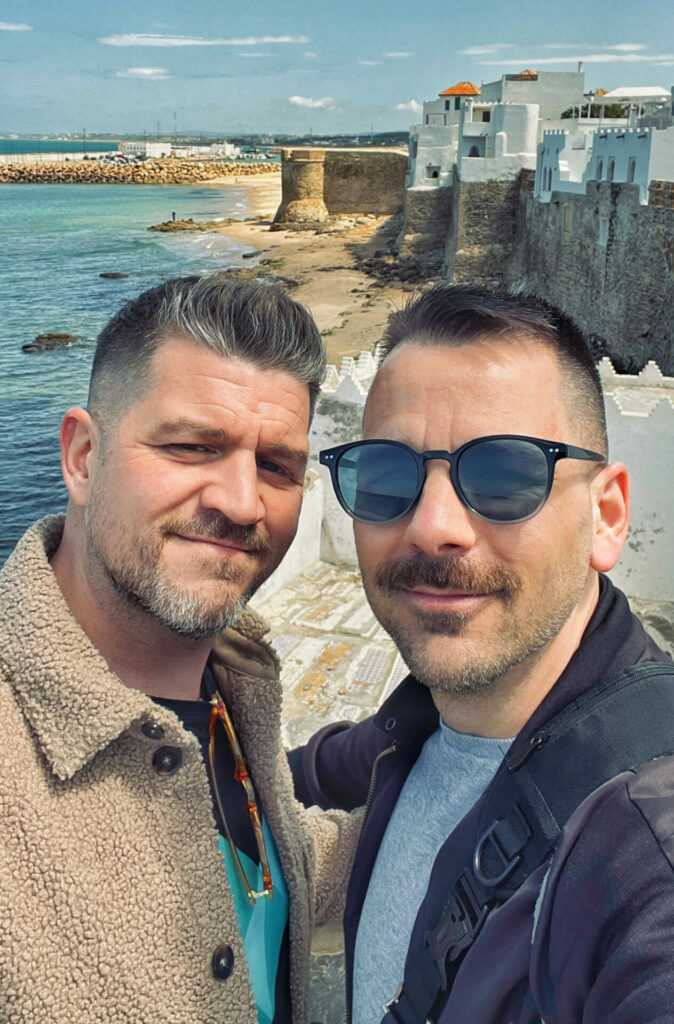
The medina also features defensive sea walls, and the views across the Atlantic from their southern edge are stunning.
In the province of Larache, hidden down a long dirt road, is La Fiermontina Ocean hotel, which has two sister hotels in Europe, and is owned by a family of Italian-Moroccan descent.
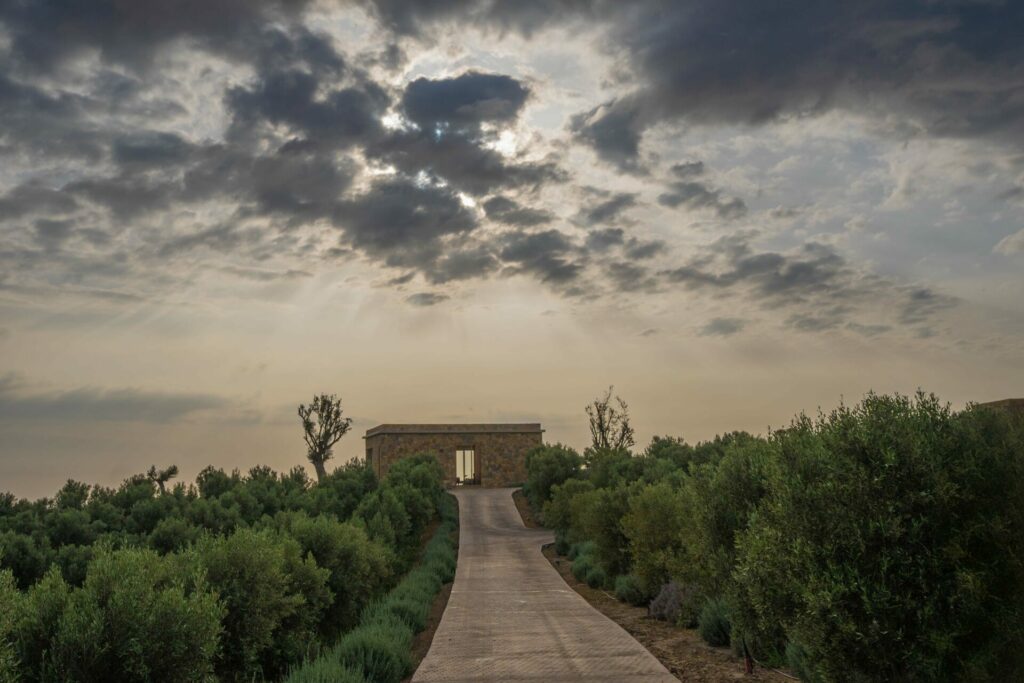
As we drive through the gates, there are row upon row of olive trees — 7,500, in fact. At the small reception building, we are enveloped in the scent of rosemary, one of the many herbs generously planted here.
The reception offers us views of the Atlantic Ocean and the surrounding green rolling hills — we are constantly surprised by how green Morocco really is.
Each private villa is like a lone cube with a facade of local stones. Inside, each suite is uniquely decorated with retro 1970s furniture and lighting sourced by French design duo Charles-Philippe and Christophe of Laboratoire Design, who have made Morocco their home.
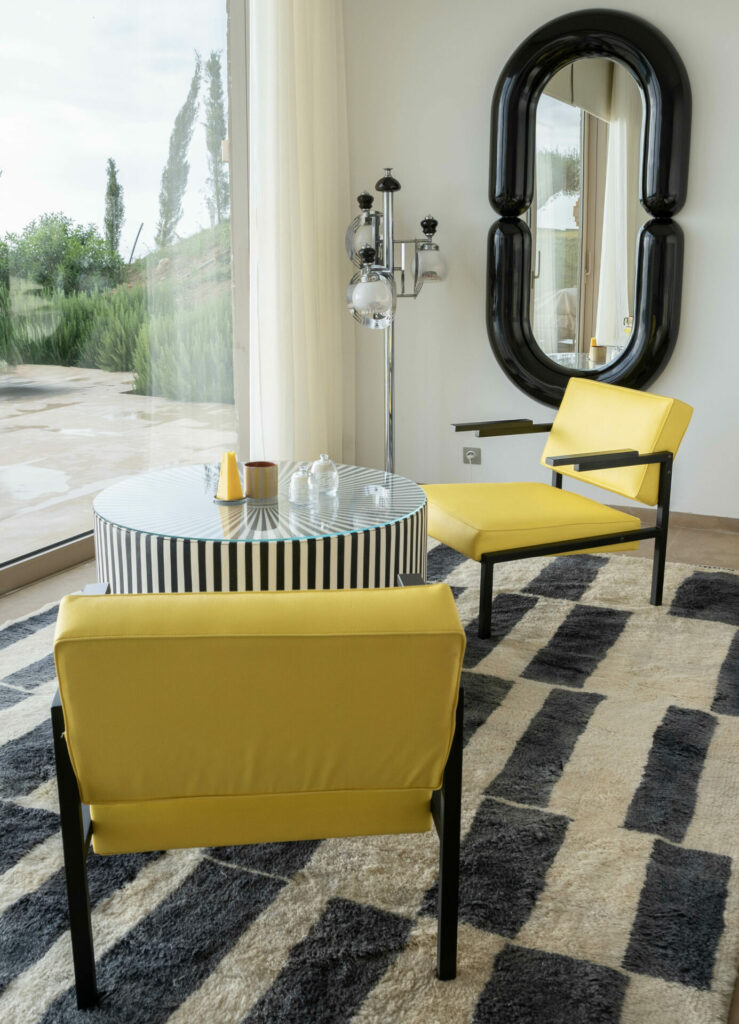
The advantage of using found pieces is that each villa has its own personality. There are no TVs in the rooms, but with panoramic floor-to-ceiling sliding glass doors to our patio, the pool, and views of the ocean, who needs a television?
The hotel’s general manager drives us in a 4×4 buggy around the property to the garden, where we try fresh strawberries, then down to the massive expanse of sand and the beach club.
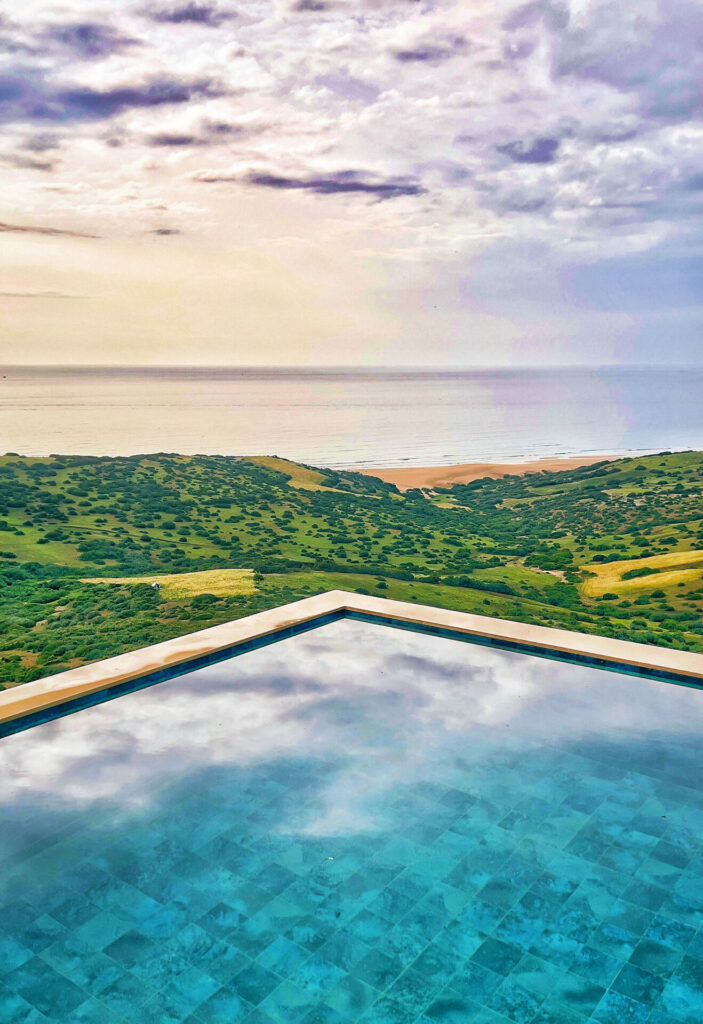
We then drive out through the gates to the tiny village, where they have four additional suites, each with Moroccan décor. In the village, there is also a spa where I enjoy one of the two white marble steam rooms.
Next, I have a hammam treatment. I lie on a marble table while my whole body is scrubbed down, leaving my skin feeling smooth and refreshed.
As night falls, we head to the hotel’s restaurant, where through the huge glass walls we spot ‘stars’ on the Atlantic waters — these are in fact fishermen’s lanterns.
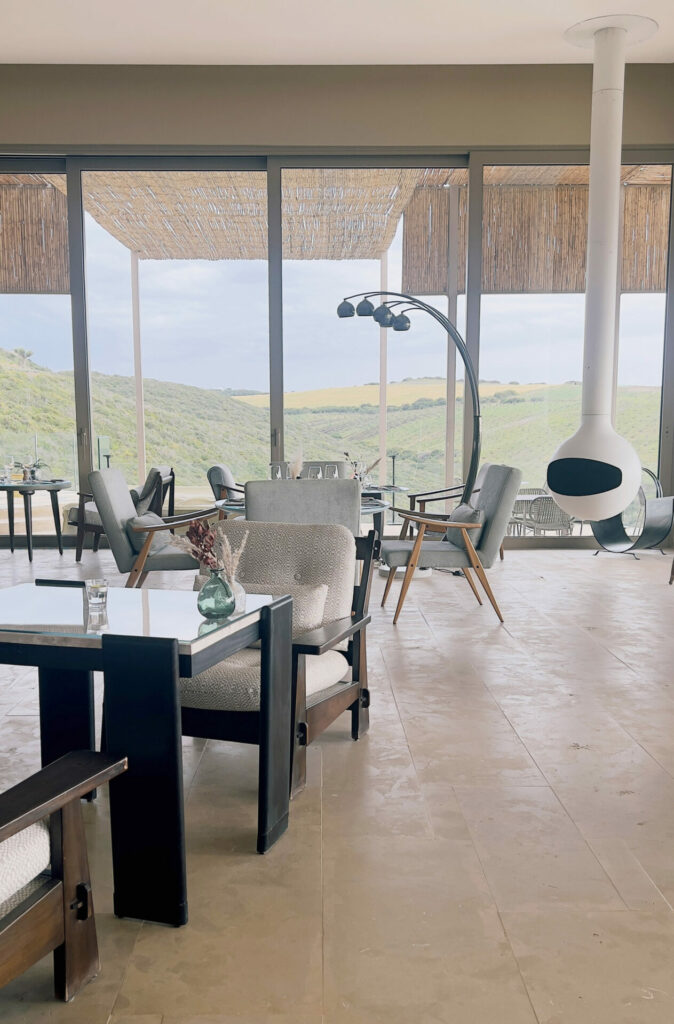
The menu is Italian-inspired, and the food is a real treat. In the morning, the breakfast buffet is small, but the gorgeous pastries prove that quality beats quantity.
In just six days here, we have discovered a Morocco that most people are not aware of, a land that is lush and green, with cities as colourful as its people.
Morocco may not be queer-friendly, but with the help of El Hammoumy, we have felt safe in the knowledge that we would encounter people and places that would welcome us with open arms.
Contact Inclusive Morocco if you are interested in visiting Morocco.
